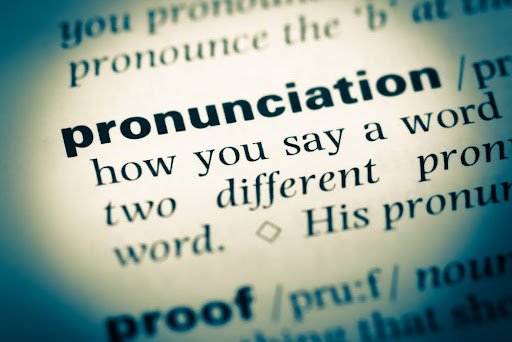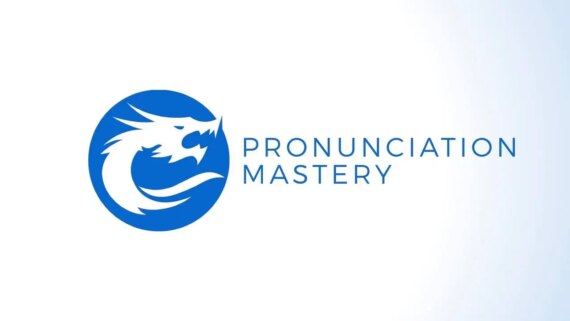20 Powerful Ways to Improve Your Chinese Pronunciation

Pronunciation is one of the most important yet often overlooked aspects of learning Mandarin Chinese. That’s because proper pronunciation lays a critical foundation for listening comprehension, speaking fluency, and long-term progress in the language.
This guide will give you some practical tips for daily pronunciation practice and the best psychological approach for improvement. By combining focused exercises with an adaptive mindset, you can master Mandarin pronunciation and develop an authentic accent. Let’s jump straight into it.
Related Reading: The Importance of Pronunciation in Chinese
Practical daily practice for Mandarin pronunciation
Get ready to roll up your sleeves! First, let’s dive into the nitty-gritty daily exercises for improving your Mandarin pronunciation, from vocal warm-ups to listening immersion.
Understanding tone pairs
Mandarin Chinese’s tonal system is probably one of the most challenging aspects of learning Chinese, but it’s vital for distinguishing word meanings. This means focusing on learning tones in pairs and sequences for clear pronunciation in Mandarin.

This kind of practice, which aligns with native speaker patterns, encourages uniform pronunciation across your vocabulary.
Visual aids like tone pair charts, paired with audio flashcards, offer a multi-sensory approach to mastering these tones, and they can be essential for mastering Chinese pronunciation.
These resources help you internalize tonal variations through repetition, sharpening your ear for the subtleties of Mandarin pronunciations and laying the groundwork for advanced language proficiency.
Related reading: Chinese Tone Pairs: The Top 5 Most Difficult
Tone pair anchors
A strategic approach to conquering the tonal challenges of Mandarin Chinese involves the clever use of “anchor words”. These anchors act as reliable benchmarks for pronunciation in Mandarin, especially for navigating the often-confusing waters of tone pairs. By assigning concrete examples to each tonal combination, learners can effectively differentiate between similar sounds.
Too complicated? Let’s break that down a bit.
A great example of this is the word “mā” (妈), which means “mother” and can be used as an anchor for the first tone, a high-level tone. On the other hand, “má” (麻), meaning “numb,” represents the rising second tone.
This contrast between “mā” and “má” provides a brilliantly clear and memorable reference for these two distinct tones, helping you grasp the pronunciation of pinyin with much greater accuracy.

Regularly practicing with these anchors allows you to develop a more intuitive sense of the pronunciation in Chinese, as you’ll begin to associate the tonal pattern with a specific and familiar sound. By focusing on particularly challenging tone pairs through this method, students can speed up their mastery of Mandarin pronunciations, leading to faster improvements in their overall language proficiency.
Related Reading: Nailing the Nuances of the Chinese 4th and 5th Tones
Vocal warm-up exercises
Warming up the mouth muscles is essential for clear pronunciation in Mandarin. Here are some targeted exercises to incorporate into your routine:
- Facial stretches: Relaxes jaw and cheek muscles, reducing tension that can affect speech.
- Tongue twisters: Improves tongue flexibility, crucial for the rapid tonal shifts in Mandarin.
- Lip trills: Engages and warms lips for more agile and accurate Mandarin pronunciations.
Consistently incorporating these vocal exercises into your practice routine can gradually build and reinforce muscle memory. This is really useful for achieving precise articulation and tonal accuracy in Mandarin. Over time, such warm-ups can lead to more fluid speech patterns and a noticeable improvement in the pronunciation of Chinese as the mouth becomes accustomed to the demands of Mandarin pronunciations.
Related Reading: How to Learn Chinese Easily
Listening immersion
At Mandarin Blueprint, we’re all about the concept of immersion as the best approach to learning a language. There’s a good reason for this.
Immersion allows the ear to become accustomed to the unique sounds, tones, and rhythmic patterns of the language. By consistently exposing yourself to the spoken word, you start to get insights into the nuanced ways native speakers use tone and inflection to convey meaning.
Here’s how you can diversify your listening practices:
- Podcasts: They offer a wealth of content ranging from casual conversations to more structured educational formats, providing varied contexts for pronunciation.
- Music: Listening to Mandarin songs can introduce learners to the language’s rhythm and tone in an engaging, memorable way.
- Dialogue recordings: These provide a clear model of back-and-forth communication in Mandarin, showcasing how pronunciation changes in conversational flow.

Each of these listening resources serves as a platform for pronunciation modeling, where you can emulate the accurate tones and pronunciation of Chinese you hear from native speakers. This kind of regular auditory input is essential for developing an intuitive understanding of Mandarin pronunciations, greatly enhancing your ability to speak with confidence and clarity.
Related Reading: The Sounds of Mandarin Chinese
Shadowing technique
Shadowing is a brilliant language-learning technique where you listen to Mandarin audio clips and immediately repeat what you hear. This simultaneous listening and speaking exercise is highly effective for training the ear and the speech organs to work in harmony, enhancing the accuracy of Mandarin pronunciation.
To maximize the impact of shadowing, here are some focused strategies:
- Selective repetition: Choose audio clips containing short, challenging dialogue or narrative sections. These segments should push your abilities, featuring complex tones or rapid speech.
- In-depth practice: Rather than skimming through longer, easier clips, deep repetition of more challenging sections can lead to significant improvements. This method ensures that difficult pronunciations are practiced thoroughly.
- Incremental progression: Start with repeating short phrases before gradually moving on to longer sentences. This builds up both confidence and skill over time, allowing for more nuanced control over the pronunciation of pinyin and intonation.

By deliberately focusing on more demanding parts of the language, shadowing can help you break through plateaus in your pronunciation skills. This targeted practice ensures that you’re not just passively absorbing the language but actively engaging with it, leading to better pronunciation and a deeper understanding of Mandarin’s tonal nature.
Related Reading: 22 Good Chinese TV Shows to Learn Mandarin.
Psychological approach to Chinese pronunciation
Mastering pronunciation requires thinking about the way that you, well…think. So let’s look next at the optimal mindsets and learning strategies to complement your practice.
The power of repetition
Regular and frequent repetition of Mandarin tones, words, and sounds is fundamental for embedding correct pronunciation into your neural pathways. This consistent drilling helps form and strengthen the connections in the brain that are responsible for language acquisition and pronunciation in Mandarin while also effectively “programming” the mouth to produce sounds accurately without conscious effort.
To deepen Mandarin language proficiency, here’s a three-fold approach:
- Tone pair repetition: Focus on practicing tone pairs until they can be articulated automatically. This could involve listening to and repeating tone pairs in a variety of words, ensuring that the rise and fall of each tone become second nature.
- Word and sound repetition: Beyond tones, repeatedly practicing entire words and their constituent sounds helps solidify their pronunciation. This includes mastering the initial consonants, the final vowels or nasals, and the accompanying tones, integrating them into your speech pattern.
- Tongue twister training: As already mentioned, Chinese tongue twisters are an excellent tool for reinforcing specific sound combinations. By challenging yourself to produce complex sounds quickly and repeatedly, tongue twisters provide a rigorous workout for speech muscles and greatly enhance pronunciation precision.
Methodical repetition isn’t just about memorization. It’s about ingraining the pronunciation of Chinese so deeply into your skill set that it becomes a natural and effortless component of your language repertoire. Through these techniques, you can achieve a level of proficiency where correct pronunciation is intuitive and automatic.
Related Reading: Debunked: Common Myths about Learning Chinese
Observational learning
Observing the mouth movements and facial expressions of native Mandarin speakers offers invaluable insights into the subtleties of pronunciation in Mandarin. By closely watching how native speakers shape their lips, position their tongue, and utilize their facial muscles, you can gather visual cues essential for accurate articulation.
Here’s how to approach using observation for language learning:
- Visual modeling: Pay close attention to how native speakers pronounce certain challenging sounds and try to mirror these articulations. This could involve watching videos or Chinese movies or engaging in conversations with native speakers, focusing on how their mouth moves during speech.
- Balanced imitation: While imitation is key, avoiding over-exaggeration is important. Strive for a natural reproduction of sounds. Subtle movements are often enough to produce the correct tones and sounds in Mandarin.
- Consistent practice: With consistent observation and practice, the subtleties of mouth movements and posture become ingrained. This leads to a more precise and authentic pronunciation without conscious effort.
The goal is to develop a balanced and authentic accent that is clear and understandable without being caricatured. Observation allows you to pick up on the nuances of Chinese pronunciation that may not be explicitly taught but are crucial for speaking Mandarin effectively.
With time, these techniques will organically refine your pronunciation, leading to a more natural and fluid use of the language.
Self-recording

Recording yourself while reading aloud or engaging in conversation in Mandarin is a powerful tool for self-assessment and improvement. When you listen to your recordings, you gain an outsider’s perspective, allowing you to critically evaluate your pronunciation in Mandarin, the flow of your speech, and the accuracy of your tones.
To get the most from this practice, consider these steps:
- Regular recording sessions: Make it a habit to record your Mandarin practice sessions. This could involve reading passages, reciting vocabulary, or even simulating conversations.
- Objective self-review: Use the recordings to objectively listen to your pronunciation of pinyin, intonation, and rhythm. Identify areas where you excel and areas that require further practice.
- Feedback from others: Sharing these recordings with a tutor or language partner can provide you with invaluable external feedback. They can pinpoint subtleties you may not have noticed and offer advice on correcting them.
- Embrace discomfort: It’s natural to feel a bit awkward or self-conscious when hearing your voice or receiving criticism. However, this discomfort is a crucial part of the learning process, leading to growth and development in your language skills.
By integrating these practices into your study routine, you create a feedback loop that continually propels your Mandarin abilities forward. It’s through listening to your own voice and embracing the constructive criticism of others that you can make the most impactful strides in improving your Mandarin pronunciation.
Theoretical understanding
A foundational understanding of the mechanics behind pronunciation can act as a troubleshooter for common issues encountered when learning Mandarin. For instance, recognizing the proper tongue placement can vastly improve the production of sounds unique to the language.
Consider the following:
- Retroflex sounds explained: The “retroflex” sounds in Mandarin, which don’t exist in English, require curling the tongue backward toward the palate to create a distinct resonance. They’re labeled in pinyin with “zh,” “ch,” “sh,” and “r,” and mastering them can be a key hurdle in achieving accurate pronunciation.
- Applying theory to practice: Learning the theoretical underpinnings of sounds, such as the difference between the plosive “b” and the aspirated “p,” enhances your ability to replicate these sounds correctly.
- Self-correction through theory: With theoretical knowledge, you can pinpoint and self-correct your pronunciation in real-time, adjusting tongue position or breath as needed for sounds like the retroflex.
By combining theoretical knowledge with consistent practice, you can approach the pronunciation of pinyin and other aspects of Mandarin with a more comprehensive understanding, allowing for quicker and more precise mastery of the language’s unique phonetic elements.
Related Reading: The Hardest Sounds in Chinese…Until Now!
Advanced pronunciation techniques

Take your Mandarin pronunciation to more advanced levels with these tips and techniques to refine your accent.
Language parents
Emulating a “language parent” with an ideal accent provides pronunciation modeling. For Mandarin, actors like Zhou Xun offer clear, standard pronunciation to learn from. Find Mandarin speakers whose style you connect with.
Tutoring experiments
Trying different Mandarin tutors exposes you to various accents while getting feedback. Seek language expertise and teaching skills to correct pronunciation gently yet effectively. The right fit accelerates improvement.
Dealing with difficult sounds
Certain sounds require targeted practice, like the notorious “ü” formed by shaping the lips into an “oo” and pronouncing “ee.” Approaching them as fun tongue acrobatics reduces frustration. Challenging sounds get easier through playful repetition.
Speech tempo control
Speaking slowly improves clarity and gives time to properly form tones and sounds. Gradually increase speed with practice while maintaining accuracy. Be patient and avoid rushing yourself.
Related Reading: Chinese WU – Letter O & U Comprehensive Guide
General advice and wisdom
Get motivated by expert guidance and words of wisdom to support your pronunciation learning journey.
Expecting the unexpected
The Mandarin language is rich with regional accents and individual variations, each adding a unique flavor to the standard pronunciation. As a learner, you should expect to encounter a wide array of pronunciation styles that diverge from the textbook examples. These variations are not errors but reflections of the vast linguistic landscape of Mandarin speakers.
Here’s how you can navigate these variations:
- Embrace flexibility: Stay adaptable in your learning approach. Be open to the different ways Mandarin is spoken across various regions, from the northern tones of Beijing to the southern inflections of Guangdong.
- Lean Into diversity: Use the diversity of accents as a learning opportunity. Listen to speakers from different areas to develop an ear for the language’s range, which can enhance your listening skills and pronunciation adaptability.
- Understanding the role of guides: Pronunciation guides and learning materials typically present an average standard of the language. They’re invaluable for building a foundation, but remember that they represent a central reference point rather than an exhaustive rule.
By acknowledging and appreciating the natural diversity within Mandarin, you can prepare for real-world communication, where the “average” pronunciation from your studies meets the “absolute” variety of everyday speech.
This mindset makes for a more robust learning experience and equips you with the versatility to understand and be understood by a broader audience of Mandarin speakers.
Time and practice
Like any skill, pronunciation develops over time through deliberate practice. Many successful learners cite months or years of daily work on tones and sounds. Keep at it, and your pronunciation journey will pay off.
Aiming for good, not perfect
Striving for perfection can hinder progress with unrealistic standards. Instead, aim for excellent comprehension and communication versus flawless pronunciation. Focus more on language than accent.
State of mind and pronunciation
Physical tiredness, stress, and low motivation affect pronunciation and language performance. Optimizing health supports progress. Stay self-compassionate on difficult days.
Vocabulary building for comprehension
As vocabulary grows, speech patterns become more recognizable. Work on vocabulary hand-in-hand with pronunciation. Use techniques like mnemonics to expand your lexicon.
Next steps after pronunciation
You’ve mastered pronunciation – now expand your Mandarin skills. Here’s some guidance on making progress after you realize that you’re getting better at pronunciation.
Learning characters with the Hanzi Movie Method
A Memory Palace approach associates tones and sounds with visual characters. The Hanzi Movie Method leverages body movements and imagery to cement characters in memory alongside pronunciation. Start integrating written Chinese once pronunciation solidifies.
Your path to Mandarin mastery
Achieving precision in Mandarin pronunciation is a journey that intertwines practical exercises with an evolving psychological perspective. The strategies outlined in this guide are crafted to steer you toward mastering the nuances of tones, the clarity of sounds, and the rhythm of fluid speech in Mandarin Chinese.
Embrace the hurdles and cherish each step forward. With dedication and methodical practice, the path to authentic Mandarin pronunciation becomes not just a possibility but an imminent success.
Do you aspire to learn Mandarin more swiftly and with greater ease? Start by understanding exactly where you stand.
Take the leap with our FREE Mandarin Fluency Scorecard!
In less than a minute, this innovative tool will assess your current proficiency in Chinese and provide you with a personalized roadmap to fluency:
- Pinpoint personal weaknesses: Identify the specific barriers that hinder your progress.
- Tailored next steps: Receive guidance that aligns with your individual skill level.
- Custom report with actionable advice: Get instant strategies for improvement backed by insights from non-native experts who have achieved fluency.
Our comprehensive scorecard digs into key areas such as reading, pronunciation, listening, and more, offering you a granular look at your capabilities. Plus, you’ll gain access to targeted recommendations and resources that have propelled others to fluency.
Ready to elevate your Mandarin journey?
Answer 12 simple questions and get instant clarity on mastering Chinese pronunciation, tones, and beyond.
It’s absolutely free, incredibly quick, and the first step toward unlocking your full Mandarin potential. Why wait?
Discover Your Mandarin Fluency Score Now (It only takes 60 seconds!)








